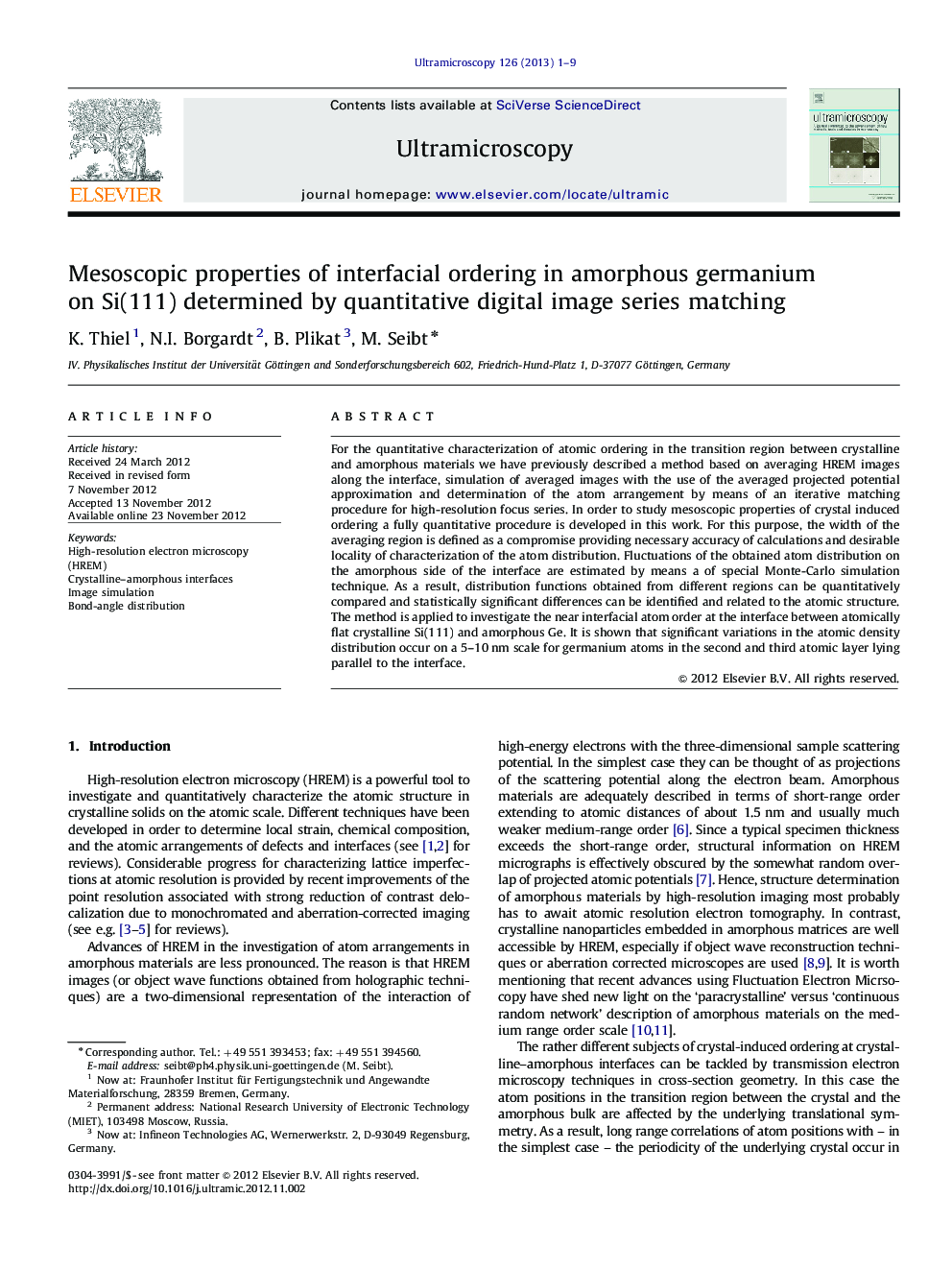| Article ID | Journal | Published Year | Pages | File Type |
|---|---|---|---|---|
| 1677720 | Ultramicroscopy | 2013 | 9 Pages |
For the quantitative characterization of atomic ordering in the transition region between crystalline and amorphous materials we have previously described a method based on averaging HREM images along the interface, simulation of averaged images with the use of the averaged projected potential approximation and determination of the atom arrangement by means of an iterative matching procedure for high-resolution focus series. In order to study mesoscopic properties of crystal induced ordering a fully quantitative procedure is developed in this work. For this purpose, the width of the averaging region is defined as a compromise providing necessary accuracy of calculations and desirable locality of characterization of the atom distribution. Fluctuations of the obtained atom distribution on the amorphous side of the interface are estimated by means a of special Monte-Carlo simulation technique. As a result, distribution functions obtained from different regions can be quantitatively compared and statistically significant differences can be identified and related to the atomic structure. The method is applied to investigate the near interfacial atom order at the interface between atomically flat crystalline Si(111) and amorphous Ge. It is shown that significant variations in the atomic density distribution occur on a 5–10 nm scale for germanium atoms in the second and third atomic layer lying parallel to the interface.
► Crystal-induced order in amorphous Ge was investigated by high-resolution electron microscopy. ► Defocus series were fitted to image simulations to extract the atomic density close to Si substrate. ► Statistical analysis is used to define confidence limits for the atomic density on a pixel level. ► Statistically relevant variations on a mesoscopic scale were obtained for amorphous Ge next to Si.
